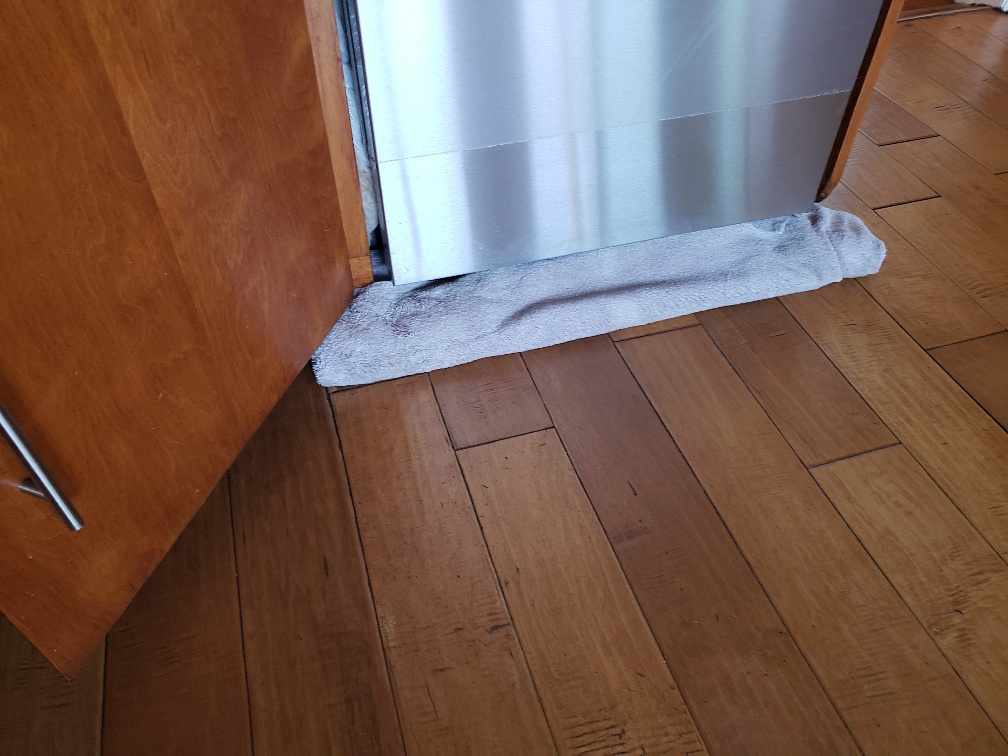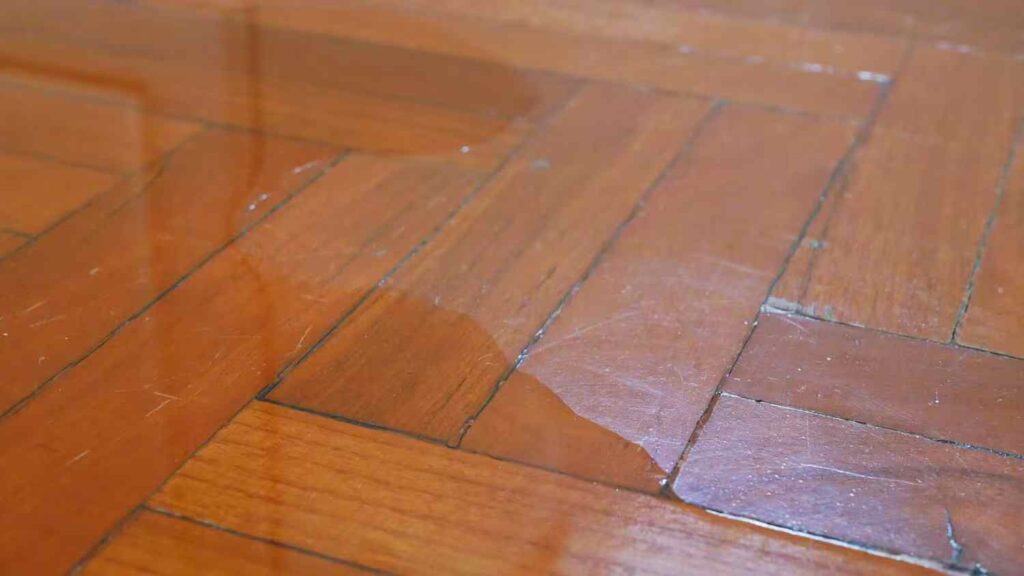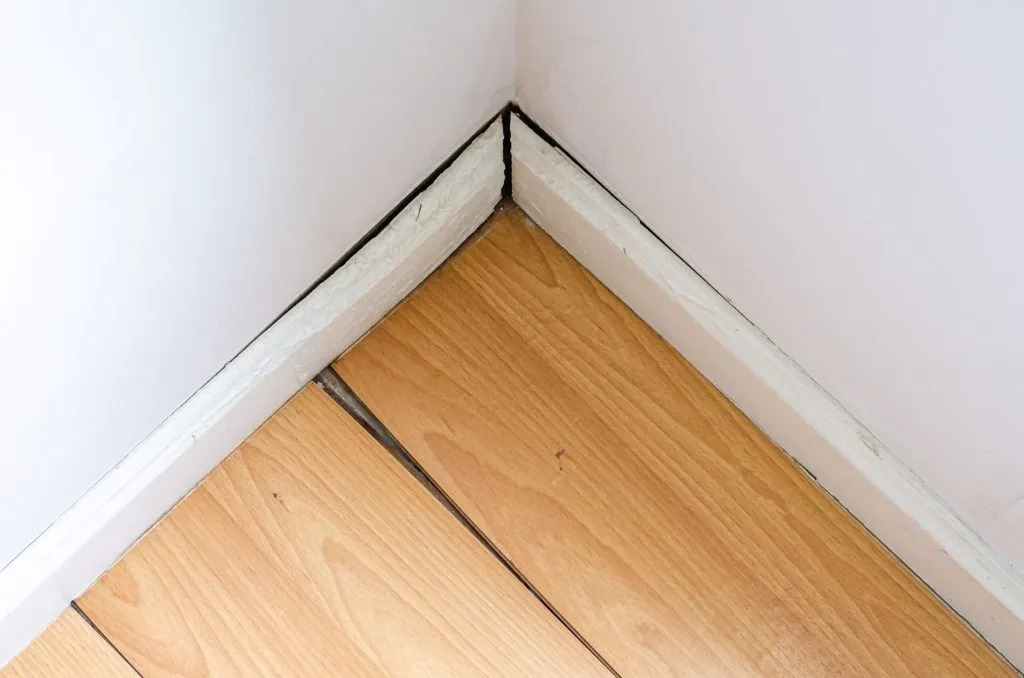Blogs
Water Damage and Its Impact on Hardwood Floors in Plano Homes

Water damage poses a serious threat to hardwood floors, especially in Plano, where humidity and weather fluctuations can increase risk. Hardwood flooring is valued for its durability, aesthetics, and longevity, but exposure to moisture can undermine these qualities, leading to costly repairs. Water can enter the home from various sources, such as leaks, spills, or high indoor humidity, making hardwood floors vulnerable to warping, staining, and even mold growth. In this post, Intensa Dry delves into the causes and consequences of water damage on hardwood floors, including prevention and repair options, to help Plano homeowners protect their investment and maintain their flooring’s beauty and functionality.
Causes of Water Damage on Hardwood Floors
Several factors contribute to water damage on hardwood floors, including spills, plumbing leaks, high humidity, and flooding. In Plano, summer storms can bring sudden rainfall that seeps into homes, affecting floorboards. Spills that aren’t cleaned promptly, such as those from water bottles or pets, can penetrate floor layers, damaging wood fibers. Poor ventilation, common in kitchens and bathrooms, can also trap moisture, leading to water buildup over time. Plumbing issues, like burst pipes or leaky appliances, are a frequent culprit. Flooding events, whether from natural disasters or drainage issues, introduce large amounts of water that can ruin wood floors almost immediately if not addressed quickly.
How Water Damage Affects Hardwood Floor Integrity
Water intrusion significantly impacts the structural integrity of hardwood floors, weakening their fibers and causing them to warp or swell. As wood absorbs water, it expands, leading to uneven surfaces and gaps between boards. Over time, this moisture can penetrate deep into the subfloor, causing it to rot or deteriorate. Mold growth is another concern, as trapped moisture creates an ideal environment for spores to thrive, jeopardizing indoor air quality. If left untreated, water damage can weaken the wood to the point of requiring complete floor replacement. Thus, even minor signs of water damage should be addressed promptly to prevent extensive harm and high repair costs.
Common Signs of Water Damage in Hardwood Floors
Homeowners should be vigilant for signs of water damage on their hardwood floors, as early detection can minimize repair costs. Warping and buckling are common indicators, with boards lifting or separating from each other. Discoloration, including dark spots or stains, often signals trapped moisture. Additionally, a musty odor may indicate mold or mildew growth beneath the surface. Cupping, where floor edges rise above the center, and crowning, where the center rises above edges, are other signs of moisture infiltration. Unusual creaking sounds or a spongy feel underfoot can also indicate compromised wood fibers. Recognizing these symptoms early can help homeowners take swift action to address the underlying moisture issue.
Short-Term and Long-Term Effects of Water Damage
Water damage can have both immediate and lasting effects on hardwood floors. Short-term effects include warping, staining, and minor separation between boards. If untreated, these problems worsen, causing long-term damage such as rot, mold growth, and structural deterioration. Over time, repeated exposure to water weakens the wood’s natural fibers, leading to floor instability. Mold and mildew pose additional risks to health and indoor air quality, especially for allergy-sensitive individuals. In severe cases, the subfloor may also suffer damage, resulting in costly replacement needs. Addressing water damage early is essential to minimize these effects and protect both the floors and the health of household members.
Preventing Water Damage to Hardwood Floors in Plano Homes

Preventing water damage to hardwood floors requires proactive measures, especially in areas prone to humidity or heavy rainfall, like Plano. Regularly inspect for plumbing leaks under sinks, around appliances, and in bathrooms. Place mats near doors and high-traffic areas to catch moisture from shoes. Use a dehumidifier during humid months to reduce indoor moisture levels. Seal hardwood floors with waterproof finishes for an extra layer of protection. Additionally, cleaning up spills immediately and ensuring proper ventilation can prevent moisture buildup. Check windows and doors for drafts to keep outdoor moisture from entering the home. Simple preventative steps can go a long way in preserving hardwood floors’ durability.
Repair Options for Water-Damaged Hardwood Floors
Repairing water-damaged hardwood floors depends on the extent of the damage. For minor issues, drying the affected area with fans or a dehumidifier can resolve moisture buildup. Light sanding can address surface-level warping, followed by refinishing to restore appearance. For more severe damage, especially if boards have cupped or buckled, individual board replacement may be necessary. Extensive water exposure may require refinishing or, in extreme cases, replacing the entire floor if subflooring is compromised. Professional assessment is recommended for a thorough water damage restoration. By addressing damage promptly, homeowners can avoid costly replacements and restore the beauty and durability of their hardwood floors.
Why Professional Help Is Essential for Hardwood Floor Restoration
While minor water damage may seem manageable, professional help is often essential for thorough hardwood floor restoration. Certified professionals have specialized equipment to detect hidden moisture, which homeowners may overlook. They can determine the extent of water penetration and advise on the most effective treatment, such as dehumidification, refinishing, or floor replacement. Additionally, professionals can properly assess subfloor damage and ensure repairs meet quality standards, helping to extend the floor’s life. DIY methods risk leaving moisture trapped, leading to ongoing issues and further damage. For lasting results, consulting a professional for water-damaged hardwood floors ensures a thorough, effective solution that maintains the flooring’s integrity.
Costs Involved in Repairing Water-Damaged Hardwood Floors
Repair costs for water-damaged hardwood floors vary widely depending on the severity of the damage. Minor repairs, such as sanding and refinishing, typically range from $3 to $8 per square foot. Replacing individual boards can cost $10 to $15 per square foot, while extensive restoration involving subfloor repairs may reach $20 or more per square foot. Plano homeowners should budget for potential additional expenses, including mold remediation, if moisture has seeped below the floorboards. Professional assessments are advisable to accurately gauge costs. While insurance may cover some damage from sudden leaks or floods, it’s essential to confirm coverage for gradual water issues common with aging plumbing systems.
How Humidity Levels Affect Hardwood Floors in Plano Homes
Humidity levels play a crucial role in the health of hardwood floors, especially in areas like Plano where humidity can vary throughout the year. When indoor humidity is too high, wood absorbs excess moisture from the air, causing it to expand and potentially warp. In contrast, low humidity can make hardwood floors contract, leading to cracks or gaps between boards. Maintaining indoor humidity between 35% and 55% is ideal for hardwood longevity. Using a dehumidifier in the summer and a humidifier in winter can help regulate indoor moisture levels, ensuring that seasonal changes don’t negatively impact the floor. Monitoring humidity can go a long way in preserving hardwood’s durability.
Insurance Coverage for Water Damage on Hardwood Floors

Insurance coverage for water damage on hardwood floors often depends on the cause and extent of the damage. Most homeowners’ insurance policies cover sudden and accidental water damage, such as a burst pipe or appliance leak, but may not include damage caused by gradual leaks or poor maintenance. Flood damage, on the other hand, typically requires separate flood insurance. Plano homeowners should review their policies and consider additional coverage if needed, especially in flood-prone areas. Consulting with an insurance agent can clarify which scenarios are covered and help homeowners make informed decisions about protecting their floors and minimizing out-of-pocket expenses in case of water damage.
FAQs
Q: How can I tell if my hardwood floors have water damage?
A: Look for signs such as warping, buckling, dark spots, or musty odors. Cupping, crowning, or uneven floor surfaces are also indicators of water damage.
Q: Can water-damaged hardwood floors be saved?
A: Yes, many water-damaged floors can be restored if addressed early. Minor damage may only need drying or refinishing, while severe cases may require board replacement or refinishing.
Q: Will homeowners’ insurance cover water damage to my hardwood floors?
A: It depends on the cause of the damage. Most policies cover sudden water damage, like a burst pipe, but may not include gradual leaks or flood damage without specific coverage.
Q: How can I prevent water damage to hardwood floors?
A: Prevent water damage by promptly cleaning up spills, fixing leaks, monitoring humidity levels, and using waterproof mats in high-traffic areas. Sealing floors also adds a layer of protection.
Q: When should I call a professional for water damage repair?
A: Call a professional if you notice signs of water damage that go beyond surface issues, such as warping, mold, or a musty smell. Professionals can assess and repair hidden moisture damage.
Conclusion
Water damage is a significant concern for homeowners with hardwood floors, especially in humid or storm-prone areas like Plano. Recognizing early signs of water damage, implementing preventive measures, and seeking professional assistance when needed can protect hardwood floors from extensive harm. While repair options vary, prompt action is crucial to minimize damage and avoid costly replacements. Maintaining hardwood floors’ beauty and durability not only enhances a home’s aesthetic but also adds value. By taking proactive steps, Plano homeowners can preserve the elegance and resilience of their hardwood floors, ensuring they remain a long-lasting feature in their homes.

